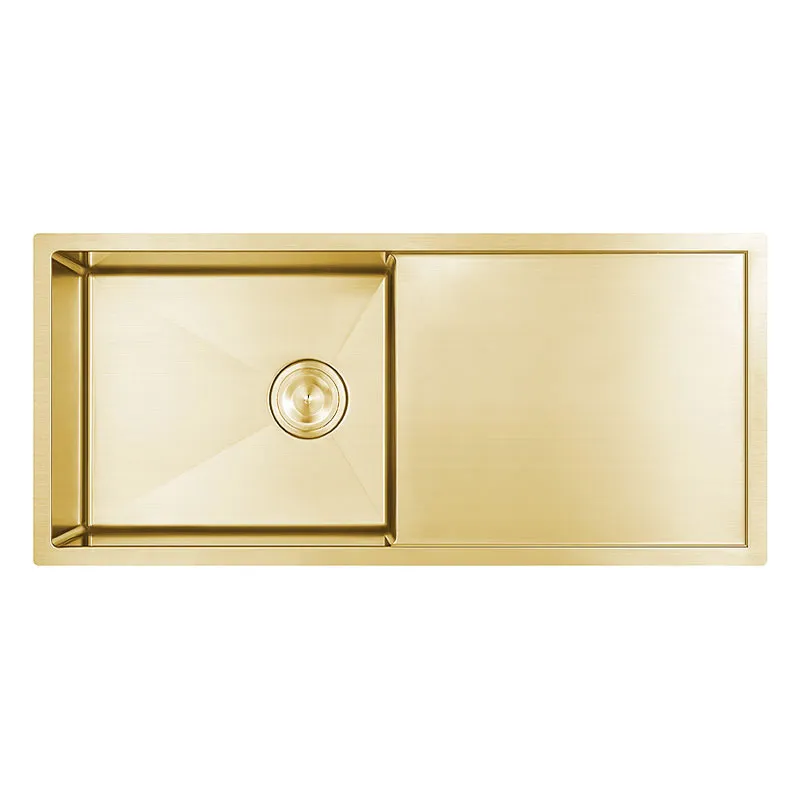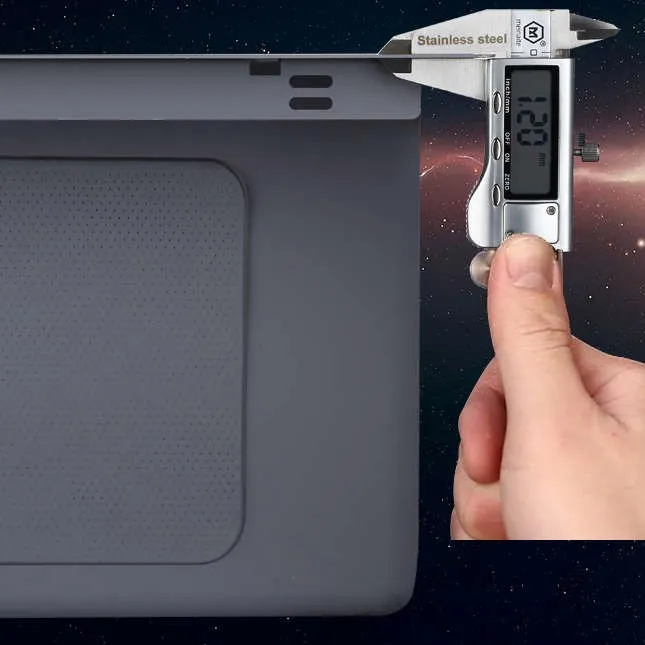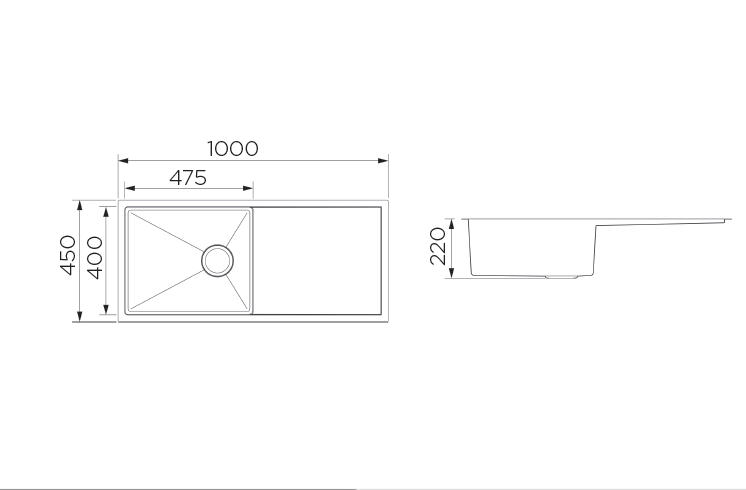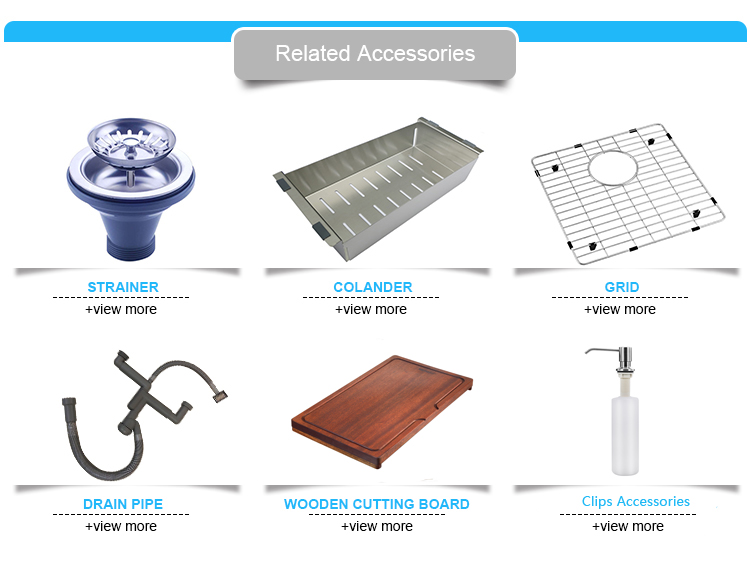In modern kitchen design and renovation, the sink is one of the most basic and commonly used features, making its selection crucial. A sink must not only be durable, but also consider multiple factors, such as appearance, cleanliness, and functionality. Undermount kitchen sinks, with their simple, modern design and efficient functionality, are becoming a popular choice in many home kitchens.
However, many people still have questions about the lifespan of this type of sink. What is the actual lifespan of an undermount kitchen sink? When does it need to be replaced or repaired? This article will delve into these questions, providing consumers with a comprehensive understanding of the lifespan of an undermount kitchen sink and how to extend its usefulness.

What are the characteristics of an undermount kitchen sink?
An undermount sink is a sink that is fixed below the countertop. The top edge of the sink is completely in contact with the countertop and is concealed, creating a smooth, seamless appearance. This differs from traditional above-the-counter sinks, where the rim often hangs above the countertop. Undermount sinks are typically made of materials such as stainless steel, composite quartz, and ceramic, offering strong resistance to heat, scratches, and stains. Since there's no gap between the sink's rim and the countertop, this design creates a more streamlined, modern look. It also makes cleaning easier, as water and dirt won't collect around the sink.

What's the lifespan of an undermount kitchen sink?
An undermount kitchen sink typically has a lifespan of ten to twenty years. The specific lifespan depends on many factors, including the sink's material, installation quality, daily usage, and maintenance.
1. Material Factors
The material of an undermount sink is a key factor affecting its lifespan. Common materials include stainless steel, quartz, and ceramic. Sinks made of different materials vary in durability.
• Stainless Steel Sinks: Undermount sinks made of stainless steel generally have a long lifespan due to their resistance to heat, corrosion, and oxidation. High-quality stainless steel sinks can last for over 15 years under normal use, and some high-end models can even reach 20 years or more.
• Quartz Sinks: Quartz sinks are made from a mixture of natural quartz sand and resin, making them extremely scratch-resistant and stain-resistant. Quartz sinks typically have a lifespan of 15 to 20 years. Quartz sinks are also resistant to scratches and stains, maintaining their aesthetic appeal and durability.
• Ceramic sinks: Ceramic undermount sinks are relatively fragile and easily impacted or scratched by hard objects. While ceramic sinks offer a refined appearance, they are less impact-resistant and typically have a lifespan of 10 to 15 years, depending on usage.
2. Installation Quality
The installation of an undermount sink has a crucial impact on its lifespan. Proper installation not only ensures the sink's stability but also effectively prevents leaks and loosening. This is especially important for the seal between the sink and the countertop. Improper installation can lead to water seepage, warping the countertop or damaging the sink, shortening its lifespan. Therefore, it is recommended to hire experienced professionals for installation to ensure the sink's longevity.
3. Daily Use
The lifespan of an undermount kitchen sink is also closely related to daily usage habits. Avoid using overly hard objects, such as metal brushes or sharp tools, in the sink to effectively reduce scratches and abrasions. During daily cleaning, avoid using harsh chemical cleaners or corrosive substances, as these can damage the sink's surface coating or material, shortening its lifespan.
4. Maintenance
Even the most durable sink will have a significantly reduced lifespan if not properly maintained and cared for. Regularly inspect the sink's seals, drainage system, and countertop connections to prevent bacterial growth and water accumulation. Every few years, perform a deep cleaning to maintain the sink's sanitation and aesthetics.
• Seal Inspection: Undermount sinks typically require seals to maintain the connection between the sink and the countertop. Deterioration or loss of seals can cause leaks, so they require regular inspection and timely replacement.
• Prevent Water and Dirt Accumulation: Water or dirt accumulation in the countertop connection beneath the sink can easily breed bacteria and mold, shortening the sink's lifespan. Therefore, during use, it's important to promptly clean water and dirt stains around the sink and keep the area dry.
• Regular deep cleaning: Perform regular deep cleanings, including cleaning the drain and checking the drain pipe for unclogged areas. This prevents dirt from accumulating in the drain pipe, which can affect the sink's drainage efficiency and potentially cause cracks or leaks.

What are the signs that an undermount kitchen sink needs to be replaced?
While undermount kitchen sinks generally have a long lifespan, sometimes, with age, certain components may become damaged or age, affecting their functionality. Here are a few signs that an undermount kitchen sink needs to be replaced:
1. Failed seals
If the seal between the sink and the countertop is aged, peeling, or broken, the sink may leak. Leakage not only damages the countertop but can also damage cabinets and other kitchen appliances beneath the sink. In these cases, it's important to replace the seal promptly and, if necessary, consider replacing the sink itself.
2. Sink Surface Scratches or Damage
After prolonged use, a sink surface may become scratched or damaged. This is especially true for stainless steel sinks. While stainless steel sinks are durable, prolonged use can cause the surface to lose its luster or develop scratches. If the scratches are extensive and difficult to repair, consider replacing the sink.
3. Sink Deformation or Looseness
If an undermount sink becomes deformed, loose, or poorly installed during use, it may become unstable and affect normal use. In this case, the sink should be replaced or reinstalled as soon as possible.
4. Poor Drainage or Leakage
If the sink's drainage system is clogged or leaking and cannot be corrected with regular cleaning, there may be a problem with the sink structure or drainage system itself. In this case, check to see if the sink needs to be replaced or the associated plumbing needs repaired.

How can I extend the life of my undermount kitchen sink?
To extend the lifespan of your undermount kitchen sink, take the following steps:
• Avoid excessive use with hard objects: Avoid excessive impact with the sink during use. Never drop sharp objects or heavy pots into the sink, especially ceramic sinks, which can easily crack due to strong impact.
• Regular cleaning: Regularly deep clean the sink to remove dirt and water stains, and keep it clean and dry.
• Check the seal between the sink and the countertop: Regularly inspect the seal between the sink and the countertop and replace any aging seals promptly to prevent leaks.
• Use specialized cleaning agents: When cleaning the sink, use specialized cleaning agents and avoid using overly strong chemicals that can damage the sink's surface.
Does Higold supply to construction companies and developers?
Yes, Higold partners with construction firms to provide kitchen sinks for new housing projects, hotels, and commercial spaces. Large orders benefit from bulk pricing, uniform quality, and delivery scheduling that matches project timelines.


